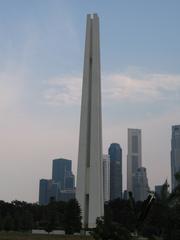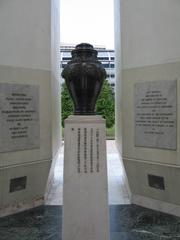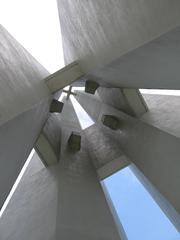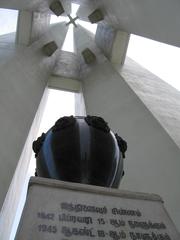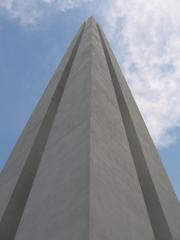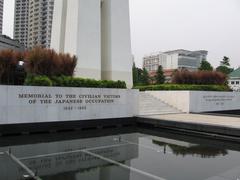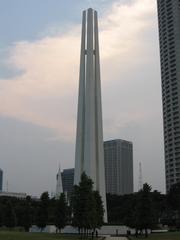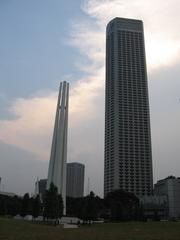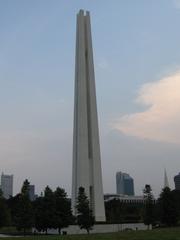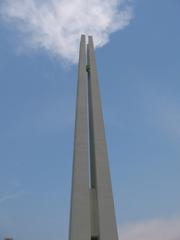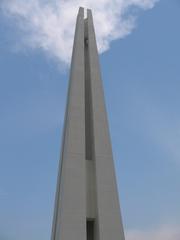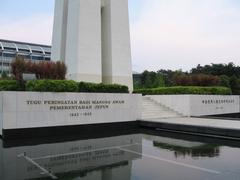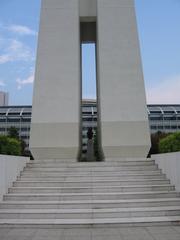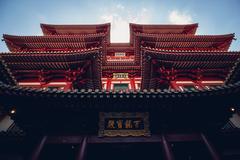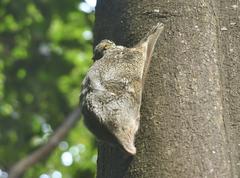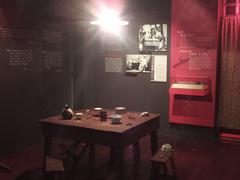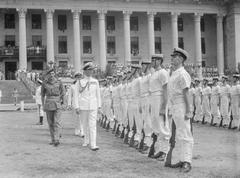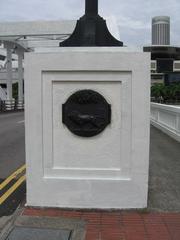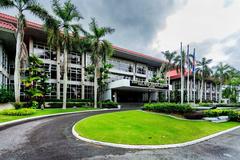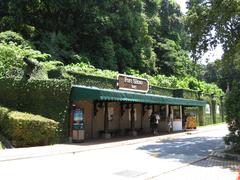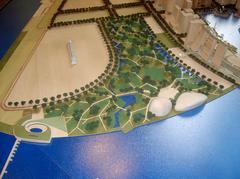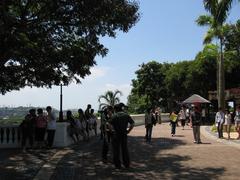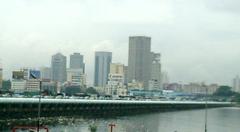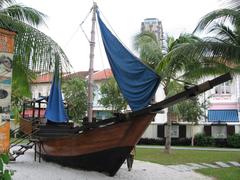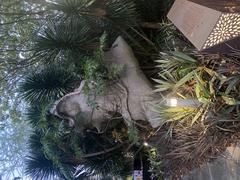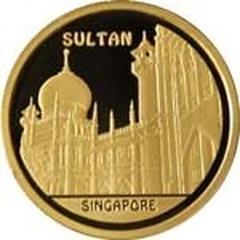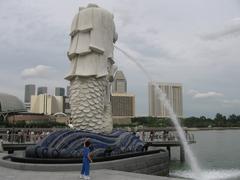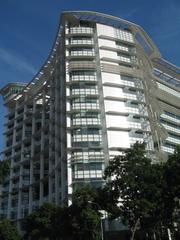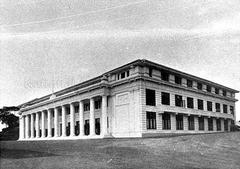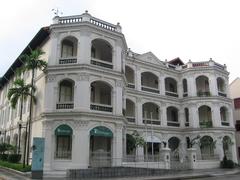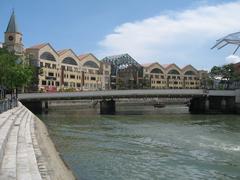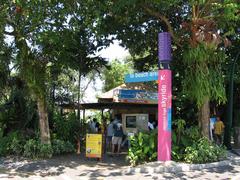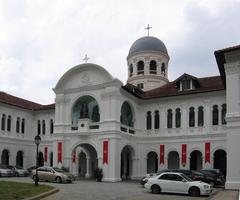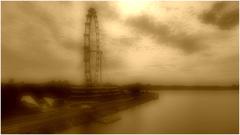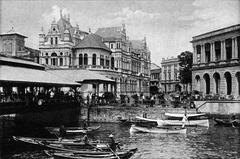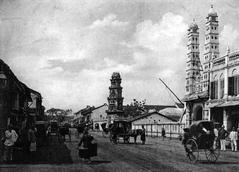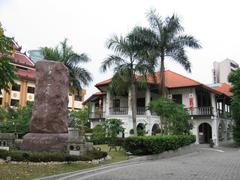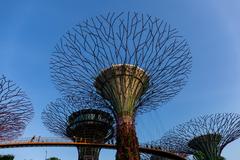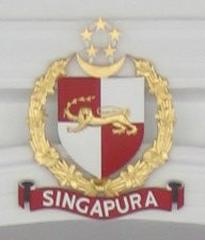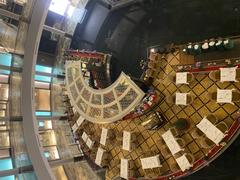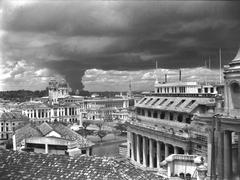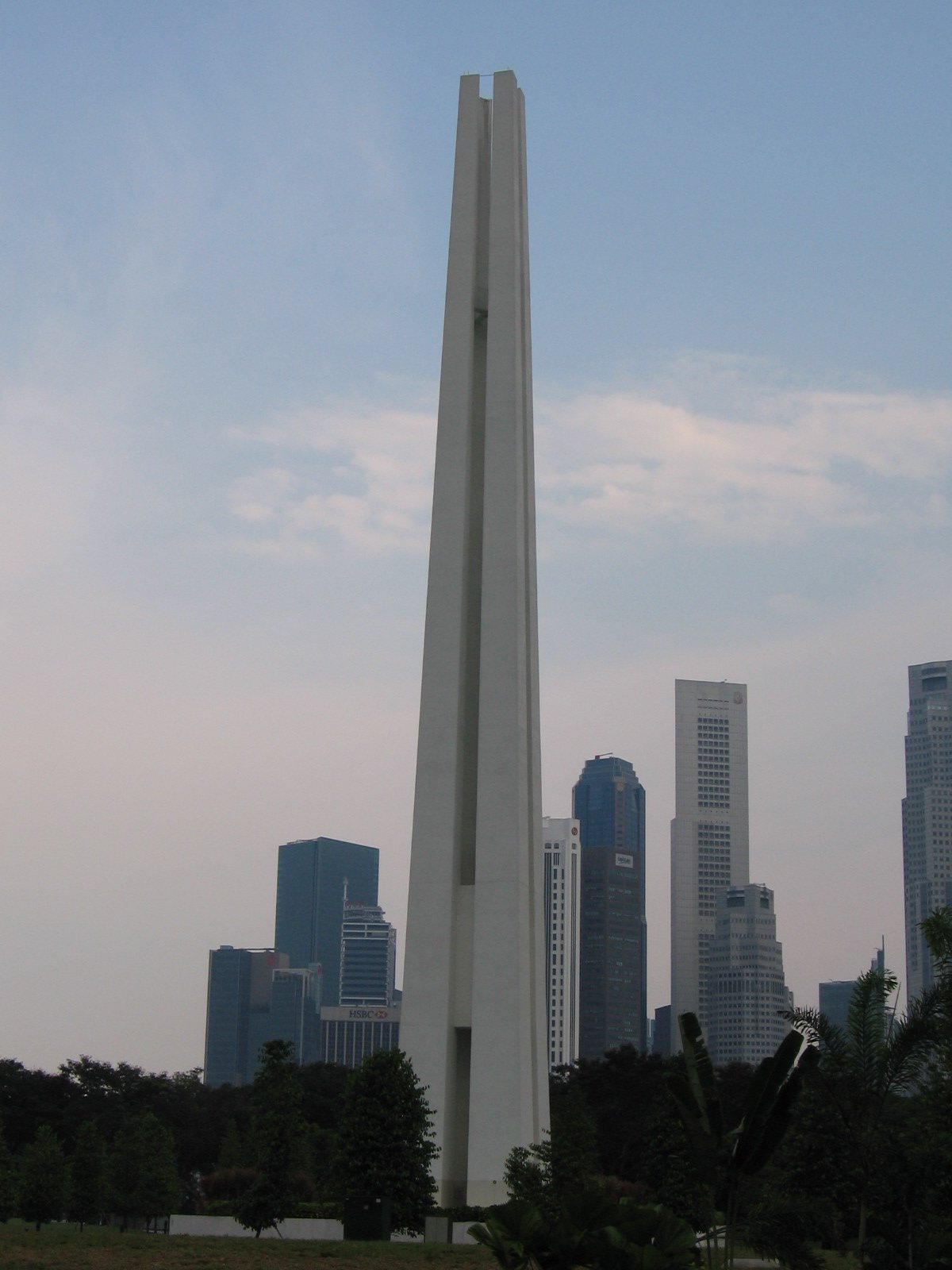
Civilian War Memorial Singapore: Visiting Hours, Tickets, and Historical Significance
Date: 15/06/2025
Introduction
The Civilian War Memorial in Singapore stands as a profound symbol of remembrance, unity, and resilience. Honoring the thousands of civilians who perished during the Japanese Occupation (1942–1945), it is a key landmark in Singapore’s Civic District. The memorial’s four soaring obelisks, often dubbed the “Chopsticks Memorial,” represent the unity of Singapore’s four major ethnic groups—Chinese, Malay, Indian, and Eurasian—rising together from a shared base. This monument not only commemorates wartime losses but also embodies Singapore’s commitment to multicultural harmony and nation-building (National Heritage Board; BiblioAsia).
This comprehensive guide provides essential information about the Civilian War Memorial: its historical background, cultural significance, visitor details, travel tips, and surrounding attractions—ensuring a meaningful and respectful visit.
Table of Contents
- Historical Background
- Architectural Design and Symbolism
- Commemoration and National Identity
- Visitor Information
- Cultural and Educational Impact
- Frequently Asked Questions (FAQ)
- Summary and Call to Action
- References
Historical Background
Origins and Motivation
The Civilian War Memorial was conceived in the aftermath of World War II, driven by the grief and trauma of Singapore’s civilian population. The Sook Ching massacre—a systematic purge by Japanese forces targeting Chinese males—claimed thousands of lives. As mass graves were discovered in 1962, the Singapore Chinese Chamber of Commerce and Industry initiated plans for a memorial. The government broadened its scope to honor all communities affected by the occupation, making it a unifying national project (BiblioAsia).
Design, Symbolism, and Construction
Architect Leong Swee Lim of Swan & Maclaren Architects won a 1963 design competition for the memorial. The four identical, white concrete pillars—each nearly 67 meters tall—rise from a single base, symbolizing the unity of Singapore’s main ethnic groups in the face of wartime adversity (National Heritage Board). Construction was funded jointly by the government and public donations, with the memorial officially unveiled on February 15, 1967—the 25th anniversary of Singapore’s fall (FunEmpire).
Unveiling and National Significance
During the unveiling, remains of massacre victims exhumed from mass graves were interred in 606 urns within a burial chamber beneath the monument. The ceremony included prayers from Buddhist, Christian, Hindu, and Muslim leaders, reflecting the memorial’s inclusive, interfaith character (Singapore Trip Guide). Over time, the site evolved into a powerful national monument, recognized for promoting unity and peace.
Architectural Design and Symbolism
The Four Pillars and Their Meaning
The memorial’s four pillars represent Singapore’s Chinese, Malay, Indian, and Eurasian communities. Their identical form and close proximity signify multiracial harmony and shared suffering during the Japanese Occupation (National Heritage Board; Wikipedia).
The Burial Chamber and Inscriptions
Beneath the pillars lies a chamber containing 606 urns with remains of civilian victims. At ground level, an empty bronze urn with lion head motifs honors the unknown dead. Inscriptions in English, Chinese, Malay, and Tamil declare: “Memorial to the Civilian Victims of the Japanese Occupation, 1942–1945,” ensuring accessibility for all Singaporeans (National Library Board).
Reflecting Pools and Landscaping
The memorial sits in War Memorial Park, surrounded by tranquil reflecting pools and landscaped gardens. These features create a peaceful environment for contemplation amid the urban bustle, and their reflections enhance the monument’s visual impact (Holidify).
Commemoration and National Identity
Each year on February 15th, Singapore observes Total Defence Day at the memorial, with interfaith ceremonies attended by government officials, community leaders, and the public. The site is a focal point for national remembrance, reinforcing Singapore’s values of resilience, multiculturalism, and peace (Straits Times). In 2013, the Civilian War Memorial was designated Singapore’s 65th National Monument (National Heritage Board).
Visitor Information
Visiting Hours and Admission
- Open daily: 7:00 AM – 7:00 PM
- Admission: Free; no tickets required
Getting There and Accessibility
- Location: Junction of Bras Basah Road and Beach Road, in War Memorial Park
- Nearest MRT stations: City Hall (EW13/NS25), Esplanade (CC3), and Bencoolen (DT21); all within a short walking distance
- Bus access: Multiple routes serve the nearby area
- Wheelchair accessible: Smooth, paved walkways and ramps
Tours, Programs, and Photography
- Guided tours: Occasionally available through the National Heritage Board and local tour operators (Singapore Trip Guide)
- Educational programs: Frequently organized for schools and history groups
- Photography: The four pillars and reflective pools are especially photogenic at sunrise and sunset. Please maintain a respectful atmosphere during your visit.
Nearby Attractions
- National Gallery Singapore
- Raffles City Shopping Centre
- The Padang
- Esplanade – Theatres on the Bay
- The Former Ford Factory (for further WWII history)
These sites are within walking distance or a short MRT ride.
Travel Tips
- Visit early or late in the day for cooler weather and softer light.
- Bring water and comfortable shoes.
- Respect the solemn atmosphere—keep noise to a minimum.
- Combine your visit with other Civic District highlights for a full cultural experience.
Cultural and Educational Impact
The Civilian War Memorial remains a vital site for cultural education and public memory. It features prominently in heritage trails, school programs, and national commemorations. By promoting reflection on the costs of war and the value of peace, the memorial helps instill a sense of shared history and unity among Singaporeans (BiblioAsia).
Frequently Asked Questions (FAQ)
Q: What are the visiting hours of the Civilian War Memorial?
A: Daily, 7:00 AM to 7:00 PM.
Q: Is there an entrance fee or are tickets required?
A: Entry is free; no tickets are needed.
Q: How do I get there by public transport?
A: The nearest MRT stations are City Hall, Esplanade, and Bencoolen. Several bus routes also stop nearby.
Q: Is the memorial wheelchair accessible?
A: Yes, the site is fully accessible.
Q: Are guided tours available?
A: Yes, check with the National Heritage Board or local operators for schedules.
Q: Can I visit the burial chamber?
A: No, the burial chamber is not open to the public.
Q: What attractions are nearby?
A: The National Gallery Singapore, Raffles City, and The Former Ford Factory are all close by.
Summary and Call to Action
The Civilian War Memorial is more than an architectural landmark—it is a living testament to Singapore’s resilience, multicultural unity, and dedication to peace. Its evocative design, inclusive symbolism, and prominent role in public memory make it a must-visit for anyone interested in Singapore’s history.
Plan your visit today to this iconic site. For up-to-date information and guided tour options, download the Audiala app and follow official heritage channels to enrich your understanding of Singapore’s wartime past and cultural legacy.
References
- Civilian War Memorial Remembrance, 2011, BiblioAsia
- Civilian War Memorial, National Heritage Board
- Historical Places in Singapore, FunEmpire
- Civilian War Memorial Sightseeing Guide, Holidify
- Cultural Exploration Around Civilian War Memorial, Singapore Trip Guide
